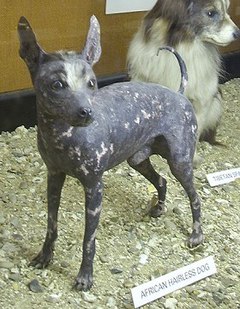
The Chinese Crested Dog is a hairless breed of dog. Like most hairless dog breeds, the Chinese Crested Dog comes in two varieties, without hair and with hair, which can be born in the same litter: the hairless and the powderpuff.

The Xoloitzcuintle is one of several breeds of hairless dog. It is found in standard, intermediate, and miniature sizes. The Xolo also comes in a coated variety, totally covered in fur. Coated and hairless can be born in the same litter as a result of the same combination of genes. The hairless variant is known as the Perro pelón mexicano or Mexican hairless dog. It is characterized by its duality, wrinkles, and dental abnormalities, along with a primitive temper. In Nahuatl, from which its name originates, it is xōlōitzcuintli (singular) and xōlōitzcuintin (plural). The name comes from the god Xolotl that, according to ancient narratives, is its creator and itzcuīntli, meaning 'dog' in the Nahuatl language.

The soft-coated Wheaten Terrier is a pure-breed terrier originating from Ireland. Wheatens typically have one of two coat types: Irish or Heavy (American). The Irish coat is generally silkier and wavier than the Heavy, or American coat, which is thicker and fuller. Wheatens are generally friendly and playful, and tend to get along well with children and other dogs.
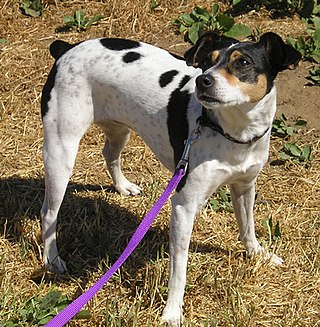
The Rat Terrier is an American dog breed with a background as a farm dog and hunting companion. They share much ancestry with the small hunting dogs known as feists. Common throughout family farms in the 1920s and 1930s, they are now recognized by the United (UKC) and American Kennel Clubs (AKC) and are considered a rare breed. Rat Terriers are an intelligent and active breed that can be kept both for pest control and as a family pet.
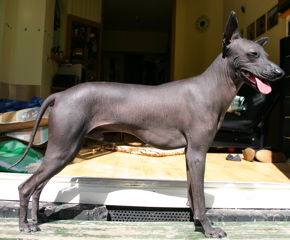
The Peruvian Hairless Dog, Peruvian viringo, Peruvian Inca Orchid, naked dog, or Chimú dog is one of several breeds of hairless dog. The breed comes in a variety of sizes and colors, including chocolate-brown, elephant-grey, and copper. They are sensitive to extreme temperatures and require special care due to their lack of fur, including protection from the sun and cold. Historically, they have been associated with the Inca Empire and are officially recognized as part of Peru's cultural heritage.
Toy dog traditionally refers to a very small dog or a grouping of small and very small breeds of dog. A toy dog may be of any of various dog types. Types of dogs referred to as toy dogs may include spaniels, pinschers and terriers that have been bred down in size. Not all toy dogs are lap dogs.

The Donskoy cat, also known as Don Sphynx or Russian Hairless, is a hairless cat breed of Russian origin. It is not related to the better-known Sphynx cat whose characteristic hairlessness is caused by a recessive mutation in the keratin 71 gene. The Donskoy's hairlessness, on the other hand, is caused by a dominant mutation.
Canine terminology in this article refers only to dog terminology, specialized terms describing the characteristics of various external parts of the domestic dog, as well as terms for structure, movement, and temperament. This terminology is not typically used for any of the wild species or subspecies of wild wolves, foxes, coyotes, dholes, jackals or the basal caninae. Dog terminology is often specific to each breed or type of dog. Breed standards use this terminology in the description of the ideal external appearance of each breed, although similar characteristics may be described with different terms in different breeds.

Merle is a genetic pattern in a dog's coat and alleles of the PMEL gene. It results in different colors and patterns and can affect any coats. The allele creates mottled patches of color in a solid or piebald coat, blue or odd-colored eyes, and can affect skin pigment as well. Two types of colored patches generally appear in a merle coat: brown/liver and black. Associated breeds include Carea Leonés, Australian Shepherds and Catahoula Leopard Dogs. Health issues are more typical and more severe when two merle-patterned dogs are bred together.

The Glen of Imaal Terrier is a breed of dog of the terrier category and one of four Irish terrier breeds. It is sometimes called the Irish Glen of Imaal Terrier or the Wicklow Terrier, and the name of the breed is often shortened by fanciers to just Glen.

The coat of the domestic dog refers to the hair that covers its body. Dogs demonstrate a wide range of coat colors, patterns, textures, and lengths.
Follicular dysplasia is a genetic disease of dogs causing alopecia, also called hair loss. It is caused by hair follicles that are misfunctioning due to structural abnormality. There are several types, some affecting only certain breeds. Diagnosis is achieved through a biopsy, and treatment is rarely successful. Certain breeds, such as the Mexican Hairless Dog and Chinese Crested Dog, are bred specifically for alopecia.

The genetic basis of coat colour in the Labrador Retriever has been found to depend on several distinct genes. The interplay among these genes is used as an example of epistasis.

Pyotraumatic dermatitis, also known as a hot spot or acute moist dermatitis, is a common infection of the skin surface of dogs, particularly those with thick or long coats. It occurs following self-inflicted trauma of the skin. Pyotraumatic dermatitis rarely affects cats.
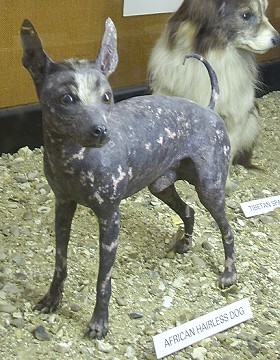
African hairless dogs, also known as Abyssinian sand terriers, were hairless dogs from Africa. It is unknown if any examples still exist.

The Argentine Pila is an Argentine breed of hairless dog. It is recognised by the Asociación Canina Argentina. It is one of a small number of hairless dog breeds; others include the African hairless dog, the American Hairless Terrier, the Chinese Crested Dog, the Hairless Khala of Bolivia, the Peruvian Inca Orchid and the Xoloitzcuintle or Mexican Hairless.
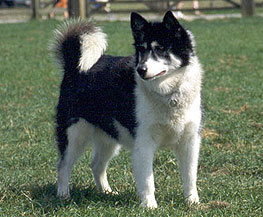
Native American dogs, or Pre-Columbian dogs, were dogs living with people indigenous to the Americas. Arriving about 10,000 years ago alongside Paleo-Indians, today they make up a fraction of dog breeds that range from the Alaskan Malamute to the Peruvian Hairless Dog.

Dogs have a wide range of coat colors, patterns, textures and lengths. Dog coat color is governed by how genes are passed from dogs to their puppies and how those genes are expressed in each dog. Dogs have about 19,000 genes in their genome but only a handful affect the physical variations in their coats. Most genes come in pairs, one being from the dog's mother and one being from its father. Genes of interest have more than one expression of an allele. Usually only one, or a small number of alleles exist for each gene. In any one gene locus a dog will either be homozygous where the gene is made of two identical alleles or heterozygous where the gene is made of two different alleles.

Forkead box I3 (FOXI3) is a protein that in humans is encoded by the FOXI3 gene. FOXI3 is a forkhead box transcription factor that is expressed in the development of hair and teeth. One of its mutations is a dominant allele responsible for the heterozygous Hh hairless trait in dogs. It was identified in 2008.
